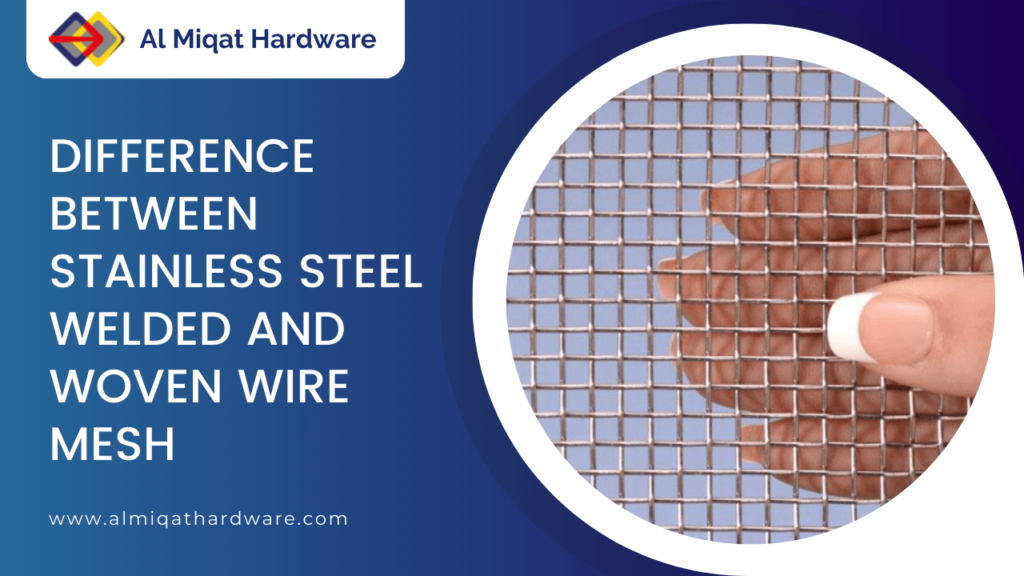Wire mesh, a versatile and fundamental material, serves a multitude of purposes across various industries. Two common variants, stainless steel welded wire mesh and stainless steel woven wire mesh, stand out for their distinct characteristics and applications. In this article, we will delve into the differences between these two types of wire mesh, exploring their manufacturing processes, structural variances, and the diverse scenarios in which they find utility.
Manufacturing Process:
Stainless Steel Welded Wire Mesh:
In the production of stainless steel welded wire mesh, individual wires are first straightened and then electronically welded together at their intersection points. This welding process creates a strong and cohesive bond, resulting in a grid-like pattern. The mesh is then trimmed to the desired dimensions, producing a finished product ready for various applications.
Stainless Steel Woven Wire Mesh:
Stainless steel woven wire mesh, on the other hand, is crafted using an intricate weaving process. The warp wires (longitudinal wires) and weft wires (transverse wires) interlace with each other to form the mesh pattern. This weaving process can be either plain weave or twill weave, depending on the intended use and required characteristics of the mesh.
Structural Variances:
Stainless Steel Welded Wire Mesh:
The welding process used in stainless steel welded wire mesh results in a sturdier and more rigid structure. The intersections of the wires are firmly welded, creating a smooth and uniform surface. This makes welded wire mesh suitable for applications where strength, stability, and a flat surface are crucial.
Stainless Steel Woven Wire Mesh:
In contrast, the weaving process of stainless steel woven wire mesh imparts a more flexible and malleable structure. The woven pattern introduces a degree of elasticity and movement within the mesh, allowing it to conform to irregular surfaces. This characteristic makes woven wire mesh adaptable to applications requiring flexibility and drape ability.
Applications:
Stainless Steel Welded Wire Mesh:
Fencing and Enclosures: Stainless steel welded wire mesh is commonly used in fencing applications. Its rigid structure and uniform surface make it effective for creating secure barriers and enclosures, whether in residential, commercial, or industrial settings.
Construction and Concrete Reinforcement: The strength and stability of stainless steel welded wire mesh make it an ideal choice for concrete reinforcement in construction projects. It enhances the tensile strength of concrete structures, reducing the risk of cracking and improving overall durability.
Safety and Security:
Welded wire mesh is often employed in safety applications, such as machine guards, protective barriers, and partitions. Its robust structure provides a reliable solution for ensuring workplace safety.
Stainless Steel Woven Wire Mesh:
Filtration and Separation: The flexibility of stainless steel woven wire mesh lends itself well to applications where filtration and separation are key requirements. This includes industries such as pharmaceuticals, food processing, and water treatment.
Architectural and Decorative Applications:
Woven wire mesh, with its intricate patterns and flexibility, is widely used in architectural and decorative applications. It can be employed for building facades, interior design elements, and artistic installations.
Garden and Landscaping: The adaptability of woven wire mesh makes it suitable for landscaping and garden applications. It can be used for trellises, decorative fencing, and other landscaping features where both aesthetics and functionality are important.
Advantages:
Stainless Steel Welded Wire Mesh:
Strength and Rigidity: The welded structure imparts strength and rigidity to the mesh, making it suitable for applications that require a solid and unyielding surface.
Consistency: The welding process ensures uniformity in the mesh, resulting in a consistent and predictable product.
Cost-Effective:
Stainless steel welded wire mesh is often considered a cost-effective solution for applications where strength and stability are paramount.
Stainless Steel Woven Wire Mesh:
Flexibility:
The woven construction provides flexibility, allowing the mesh to conform to different shapes and surfaces.
Versatility:
Woven wire mesh is versatile and adaptable, making it suitable for a wide range of applications in various industries.
Decorative Appeal:
The intricate patterns and designs achievable with woven wire mesh contribute to its decorative appeal, making it a popular choice for architectural and artistic applications.
Conclusion:
In the world of wire mesh, the choice between stainless steel welded wire mesh and stainless steel woven wire mesh ultimately depends on the specific requirements of the application. While welded wire mesh offers strength and rigidity, woven wire mesh provides flexibility and versatility. Understanding the differences between these two types of mesh allows for informed decisions, ensuring that the chosen material aligns seamlessly with the demands of the intended use. Whether in construction, filtration, landscaping, or artistic endeavors, the unique characteristics of stainless steel welded and woven wire mesh play a pivotal role in shaping diverse industries.
Have questions? Contact us for personalized assistance and wire mesh expert guidance.
Call: +971 65664526
WhatsApp: +971 553212331
Email: sales@almiqathardware.com


